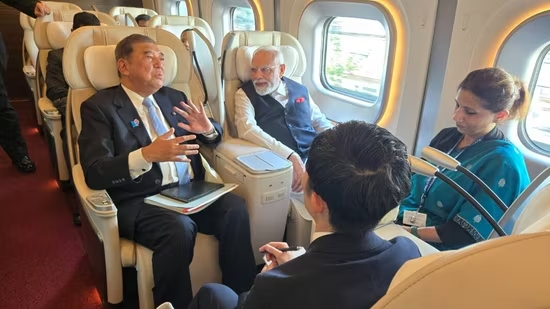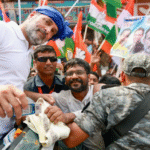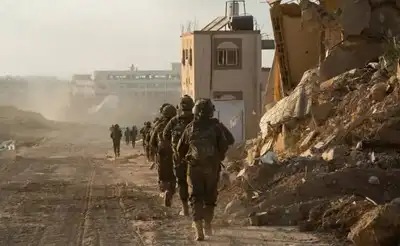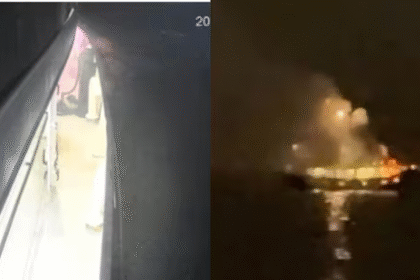PM Modi Rides Japan’s Iconic Bullet Train with PM Fumio Kishida, Meets 50+ Indian Train Drivers Training in Japan for India’s High-Speed Rail Project
PM Modi takes a high-speed bullet train ride in Japan with PM Fumio Kishida, meeting 50+ Indian train drivers training for India’s ₹1.08 lakh crore Mumbai-Ahmedabad project. A milestone in India-Japan partnership
Prime Minister Narendra Modi took a bullet train ride with his Japanese counterpart Shigeru Ishiba on the second day of his visit to Japan on Saturday and met with Indian train drivers currently training at East Japan Railway Company.
Both the Prime Ministers were headed to Japan’s Sendai city.
Japanese PM shared pictures from the ride on his X (formerly Twitter) account and wrote, “With Prime Minister Modi to Sendai. Continuing from last night, I will be with you in the car.”
Several Indian train drivers currently training in Japan with JR East lined up to greet Modi on Saturday. The Prime Minister met the drivers and also posed with them for pictures.
Earlier on Saturday, Modi met with governors of sixteen prefectures of Japan in Tokyo. During the interaction, Modi “highlighted the potential of states-prefectures collaboration and in this regard urged action under the State-Prefecture Partnership Initiative launched during 15th India-Japan Annual Summit for shared progress,” said Ministry of External Affairs spokesperson Randhir Jaiswal in a post on X.
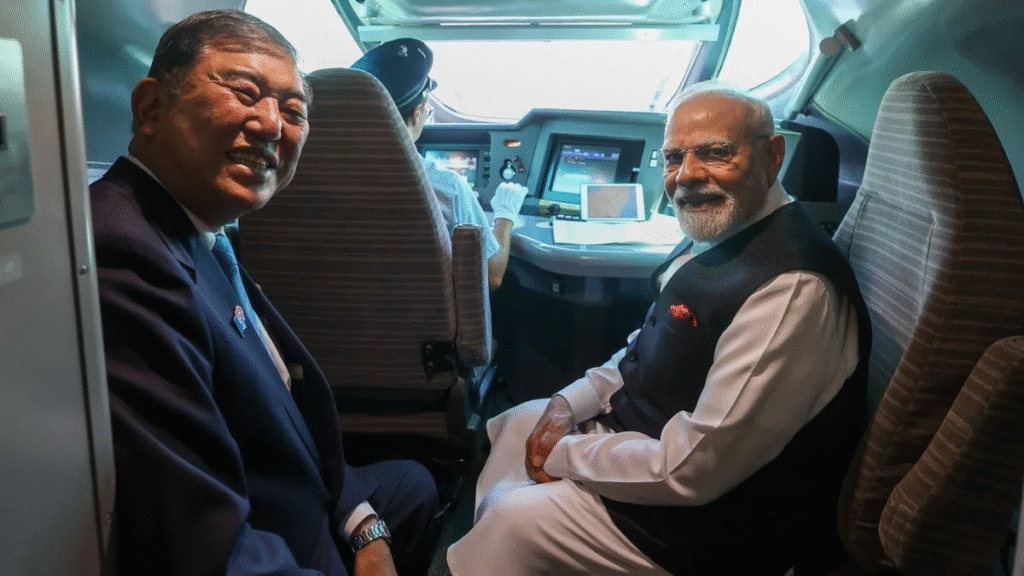
Sharing pictures from the meet, Modi said, “State-prefecture cooperation is a vital pillar of India-Japan friendship. This is also why a separate initiative on it was launched during the 15th Annual India-Japan Summit yesterday.”
‘There is immense scope to cooperate in areas like trade, innovation, entrepreneurship and more. Futuristic sectors like Startups, tech and AI too can be beneficial,” he added.
Prime Minister Narendra Modi took a significant step in strengthening India–Japan relations by riding Japan’s world-famous Shinkansen bullet train alongside Japanese Prime Minister Fumio Kishida. The special ride was not just symbolic of the strong ties between the two nations but also marked an important milestone in India’s ambitious Mumbai–Ahmedabad High-Speed Rail Project, a ₹1.08 lakh crore mega initiative that will redefine India’s rail infrastructure.
During his visit, PM Modi interacted with more than 50 Indian train drivers and engineers currently undergoing specialized training in Japan to operate and manage the high-speed trains that will soon run in India. These professionals are being trained in advanced driving simulators, safety operations, punctuality management, and passenger service standards — areas where Japan has set global benchmarks.
PM Modi’s journey with PM Kishida was more than just a ride. It showcased India’s readiness to embrace cutting-edge Japanese technology, particularly in the field of railways. The Shinkansen system, known for its top speed of 320 km/h and unmatched safety record of zero passenger fatalities in over 50 years, serves as the model for India’s first bullet train network.
Both leaders were seen engaging warmly during the ride, discussing not only bilateral cooperation but also the shared vision of green, sustainable, and safe mobility solutions for the future. Modi described the experience as “historic and inspiring,” while Kishida highlighted that India’s project will become “a new symbol of Japan–India friendship.”
A key highlight of PM Modi’s program was his meeting with the Indian drivers and technical staff currently stationed in Japan. These individuals are undergoing extensive 12- to 18-month training programs, which cover every detail of high-speed rail operations.
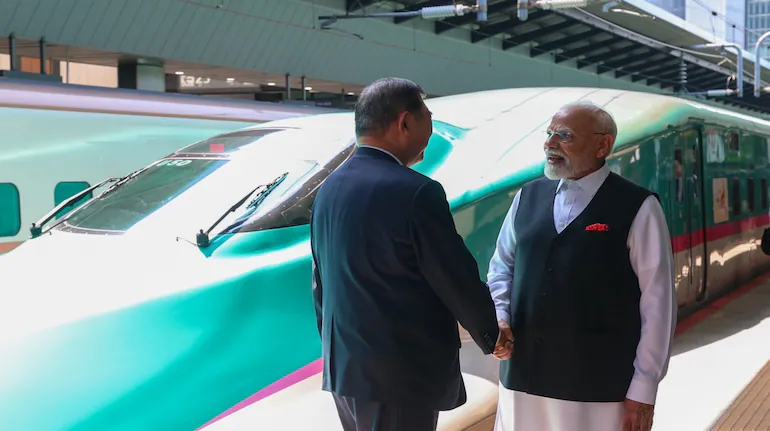
From mastering precision timekeeping — where trains are expected to run within seconds of their schedule — to understanding emergency evacuation procedures and passenger comfort systems, the Indian trainees are gaining hands-on experience directly from Japan’s experts. This trained workforce will be the backbone of India’s bullet train project, ensuring smooth and safe operations once the service begins.
The Mumbai–Ahmedabad High-Speed Rail Corridor is the first of its kind in India, being built with major financial and technological support from Japan. Once operational, the train will cover the 508 km journey in just 2 hours, compared to the current 6–7 hours by conventional rail.
The project is expected to revolutionize Indian travel, reducing congestion on existing routes, boosting economic connectivity between Gujarat and Maharashtra, and generating thousands of direct and indirect jobs. According to officials, over 20,000 workers are already engaged in the construction phase, while hundreds of Indian engineers are being trained in Japanese rail technology.
The bullet train collaboration is a flagship project under the India–Japan Special Strategic and Global Partnership. Beyond railways, the two nations are also deepening cooperation in areas such as semiconductors, clean energy, and defense technology.
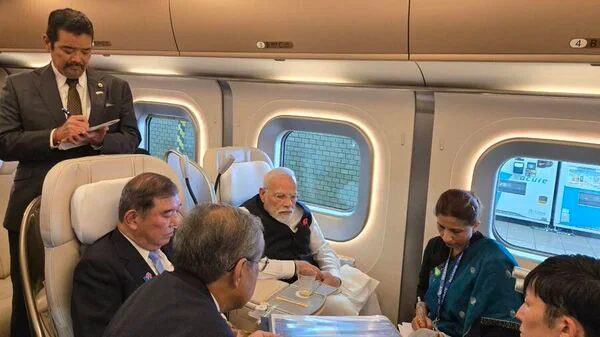
By personally riding the bullet train and meeting Indian trainees, PM Modi has sent a strong message about his government’s commitment to delivering world-class infrastructure to citizens. The event also highlighted the importance of skill development and technology transfer, ensuring that India does not just import technology but also builds indigenous expertise.


